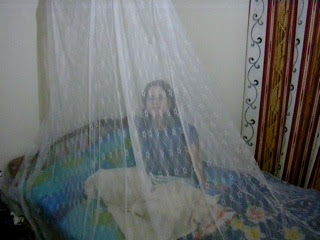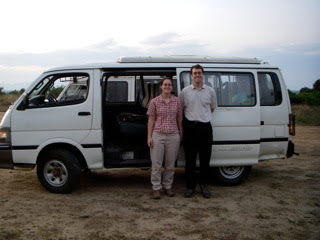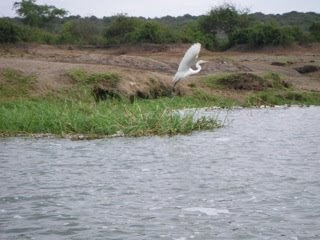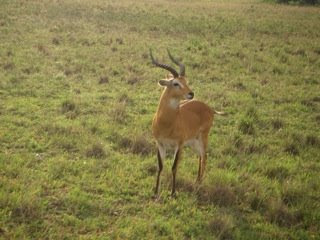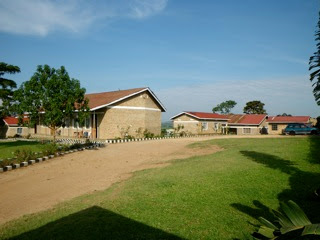
Of course, I have been most interested in the animal farming as well. There are many local honey producers here, although I have not yet seen the honey farms. I am told they are different than Canadian honey farmers. The dairy industry is quite extensive here. Most of the cattle are holstein Friesians crossed with the local Ankole cattle. The Ankole cattle are resistant to many tick borne diseases, whereas the 'exotic' Holsteins are not. Whereas the Holsteins here can give as much as 20L milk/day (still only about half of an excellent cow in Canada), the Ankole cattle give 2-4 L milk/day. So the Holsteins are popular, but the farmers must use a lot of tick sprays and expensive inputs to keep them alive.
Most farms have between 1 and 20 cattle, which they take to graze in nearby fields. All land is privately owned, but there seem to still be public access to some grazing areas. There are also many goats (in herd of 5 to 300) and goat meat is very popular here. There are also many 'zero grazing' (free-stall) herds of cattle, one of which we can see from our house. These require more labour in harvesting the
 grasses. The benefit for the Holsteins is decreased exposure to ticks and tick borne diseases and a higher level of nutrition, so more milk. Artificial insemination is available here through the government. I am told there is one person in Bushenyi district who performs this service, but that the timing is not always predictable, making pregnancy rates rather variable! So natural service is also common here. I am hoping to visit some of the zero-grazing facilities to see how they operate for myself.
grasses. The benefit for the Holsteins is decreased exposure to ticks and tick borne diseases and a higher level of nutrition, so more milk. Artificial insemination is available here through the government. I am told there is one person in Bushenyi district who performs this service, but that the timing is not always predictable, making pregnancy rates rather variable! So natural service is also common here. I am hoping to visit some of the zero-grazing facilities to see how they operate for myself.With all the dairies, milk is a popular drink. The milk is sold raw from the dairies and tuberculosis and brucellosis are still prevalent here. Quality control is still lacking (adding water to milk is apparently common if sold straight from the farm) In the homes we visit, milk is always served boiled (hot). The creamy milk makes for excellent tea and cocoa!
I have been told that cattle are a measure of wealth here. An Ankole cow is worth about $300 and a good holstein cross is worth $400 - $600. On the way back from one of the practical sessions, one of my students informed me that a typical bride price was 5-10 cows (depending on the quality of the cows, I guess).

There are also pigs, and sheep here, although in smaller numbers and many chickens. One of our friends here has 300 layer chickens at her home (which we have not yet seen). We are enjoying the abundance of eggs. And occasionally we see fish (tilapia) from the small local lakes, although it is not a common source of food here. I will post more about farming as I hopefully see more farm operations in the area.
